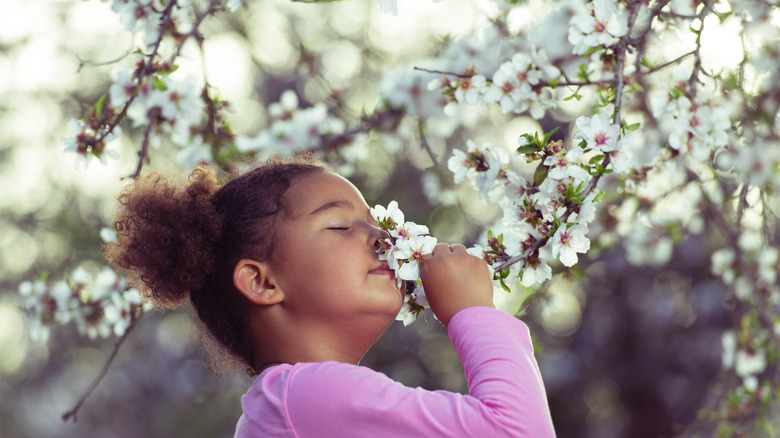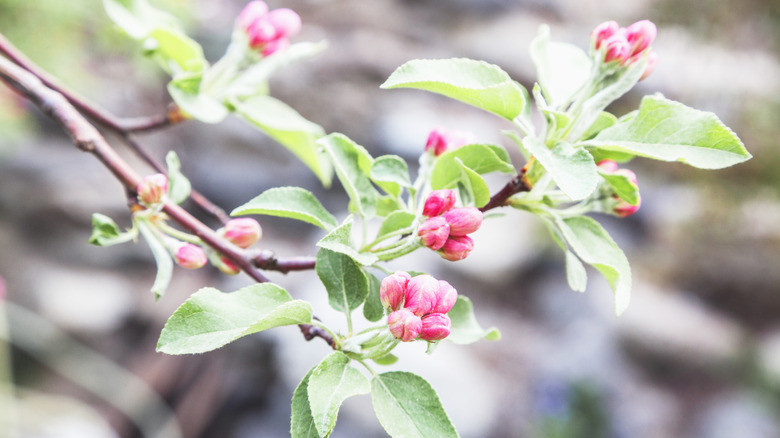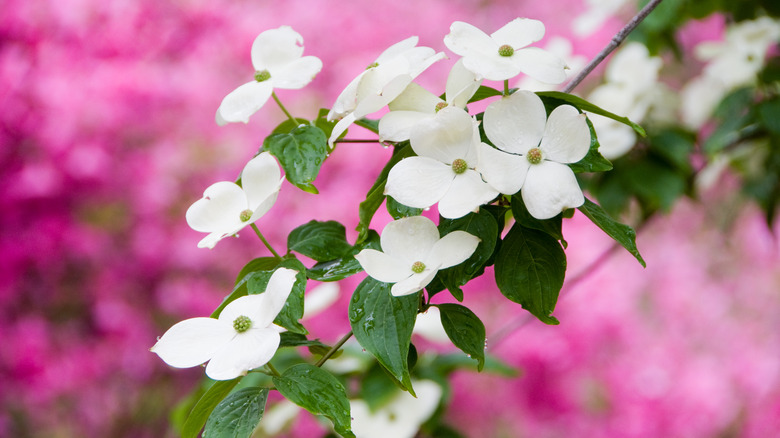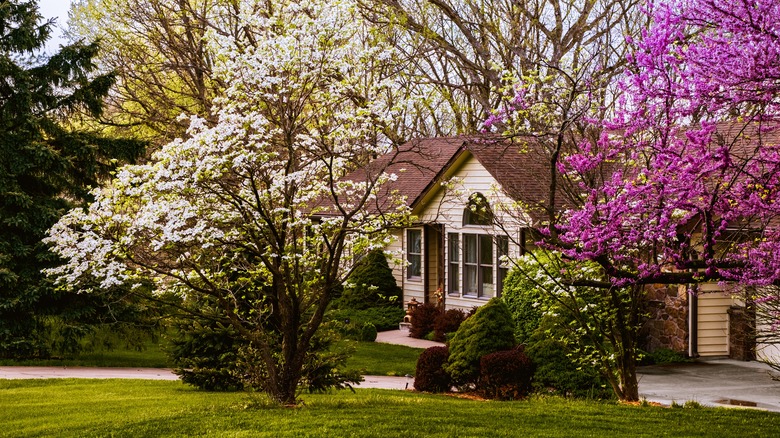Our Master Gardener Says When Should You Worry About The Effect Of Cold Weather On Your Flowering Trees
As winter slowly gives way to spring, leaf buds start to swell and eventually unfurl while we await the season's big show of blooms. Some trees — like redbuds, deciduous magnolias, and many types of fruit trees — produce their blooms first. Thankfully, we do not have to worry about leaves if we get a late freeze because trees will produce more if the first ones get damaged. Unfortunately, the same is not true for the flowers of trees. Once those blooms are open, they are susceptible to cold temperatures. The damage caused by a late freeze can shorten the life of the stunning blooms on ornamentals and prevent fruit from developing on edibles.
With the exception of some tropical trees grown in pots, like Meyer lemons or dwarf varieties of other citrus, most flowering trees will tolerate a light frost. Although the petals may show a bit of frost damage, even open blooms will go on to produce fruit as long as temperatures stay above 27 degrees Fahrenheit, which is considered a hard freeze. Essentially, this means a late frost may make ornamentals look a bit scraggly, but that's the worst of it. When temperatures are forecasted to drop below this level, it's time to think about trying to protect your trees.
Tree buds
The effect of a hard freeze on tree buds varies depending on the type of tree. In general, trees that produce larger fruits like apples and pears tolerate a hard freeze better than ornamental options and smaller fruits like cherries. While in the bud, flowers are safe from light frosts, so there is no need to worry if the temps hover around 32 degrees Fahrenheit, even if you see tiny buds developing. However, while it may not feel like much of a difference to us, just a few degrees can mean the difference between a decent harvest and a few surviving fruits.
The ability of trees to retain their buds depends both on the temperature and the bud's stage of development. The closer it is to blooming, the more susceptible a bud is to cold temperatures. In the early stages, flower buds can survive temps in the teens. As they get close to blooming, Keil Tree Experts reports that once a hard freeze hits, trees may lose about 10% of their buds, but for each degree below that, the loss increases considerably. Once the ambient temperature hits 24 degrees, that number skyrockets to a 90% loss. Again, the total loss depends on the kind of tree, but almost every tree with buds takes a significant hit when winter comes back with a vengeance.
Open blooms
Trees are most susceptible to damage when they are at their most beautiful. Once those buds open and the blooms emerge, they are no longer protected. As we mentioned, the petals of most blooms may be slightly affected by a light freeze. The petal tips may turn brown, but it's unlikely you will see major damage if the temperatures hover around 32 degrees Fahrenheit. You may not see any at all; it just depends on the tree and how hardy the blooms are. The real problem comes when those temperatures hover closer to 28 degrees.
There are some ways to protect your blooms in both the bud and flowering phases. If your trees are small enough, you may be able to save them by wrapping them in cloth like burlap or old sheets. It seems counterintuitive, but the buds and open blooms on larger trees can be protected by creating a layer of ice using a sprinkler or spraying your trees with a hose-end sprayer while the temperatures are below freezing. The key is to keep the water flowing for as long as the temperatures are below freezing so they thaw slowly. If you stop watering and the sun comes out to thaw the bloom or bud too quickly, the damage can be irreversible.
Preventing cold damage to flowering trees
We hate to be Debbie Downers, but while there is a lot you can do to prevent a multitude of problems in your garden and landscape, it is difficult to prevent cold damage to flowering trees. As climate change leads us toward warmer winters overall, we are not protected from late cold snaps. In fact, this global trend toward warmer temperatures increases the possibility that we will see frost damage to our blooms and sometimes significant losses. Trees are triggered to produce buds based on several factors. They need the minimum number of chilling hours for their species. This is the amount of time required for that specific tree to spend below freezing before it will produce buds. Day length and temperature are also factors for breaking dormancy. Once these needs are met, the tree will produce leaf and flower buds. As the winters get warmer, that's happening earlier in the season, but very often a cold front comes through late in the season, making the growing season less predictable.
Planting tree varieties that are known to thrive in your region is a great way to help protect from late frosts. Native species are always a good choice, and if you are looking for fruit trees, talk to sellers at your local farmer's market or contact your local extension service office for the best cultivar recommendations.



